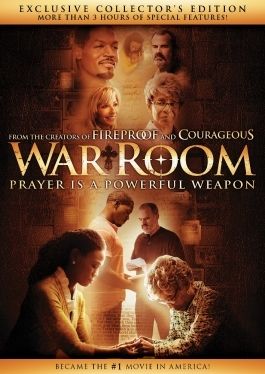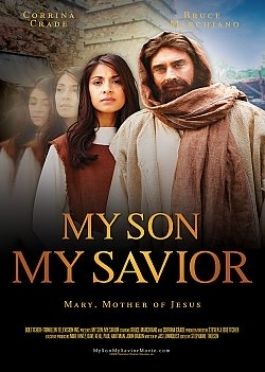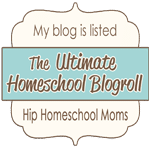Alyssa and I received a
one-year online subscription to
all 6 levels of content on
Here to Help Learning to review as part of The Old Schoolhouse Review Crew Team. We've been working through the
Flight 1 Paragraph Writing lessons. This subscription also included their recently released
Island of the Blue Dolphin literature study. The author of this amazing curriculum, Beth Mora, is a homeschool veteran who presents lesson content as different costumed characters. The program centers around an airplane or flight theme. The curriculum doesn't have to be completed in order, but the flights do build on each other.
I was hoping to add a little more creative writing fun to our day. I also wanted my daughter to learn how to write cohesive paragraphs with attention grabbing openings and relevant closing sentences. Furthermore, I wanted to review this curriculum to see if it would be appropriate for a homeschool co-op class.
Product Description
Flight 1 Paragraph Writing is suitable for children in 1st-3rd grade. There are a total of six flights organized into two main groups. Three of the flights are meant for students working on
Paragraph Writing and three are set-up for students working on
Essay Writing which is designed for students in 4th-6th grade. Each flight is equivalent to approximately one-year of instruction if you utilize the lessons at the suggested pace.
Here to Help Learning teaches writing with a simple step-by-step approach. It addresses several writing styles including narrative, descriptive, persuasive, expository, and poetry writing. Not to mention, it incorporates the writing process into
each project. Six projects or units will be completed during the course. Each flight provides the student with interactive videos, reinforcing worksheets in PDF format, and printable scripted teacher lessons. Visit the following link to see the
scope and sequence.
There are 32 lessons included in the Flight 1 Paragraph Writing curriculum. Click on the lesson number and then the light blue rectangle for content.
How We Used Here to Help Learning
The subscription was used on a MAC OS X 10.9.5 computer. I suggest using Chrome for printing and viewing purposes. Click on the printer icon to access the materials. I tried using Safari, but the margins weren't printing properly.
If you are considering this writing curriculum, then I
definitely recommend that you sign up for the
free trial to explore the website, the lesson format, and organization of the program. I had Alyssa attempt one of the writing lessons so that I could see whether or not she'd like it.
There's a moderate amount of teacher prep and involvement. The parent serves as the facilitator guiding the student through the lessons. I printed the worksheets ahead of time. I watched the videos with my daughter and was available to help.
Teacher Folder
The Teacher's Guide or Writing Overview, which explained the curriculum and activities in a logical manner, was printed in PDF format and stored in a 3-ringed pocketed folder followed by the detailed, scripted, and numbered teacher lessons. The Quick Reference Guide was printed, three-holed punched, and placed in my folder too. It's chocked full of grammar and punctuation resources.
Writing Binder
We organized Alyssa's 5-tabbed binder so she'd be ready to go before the subscription arrived via e-mail. It'll store and categorize her assignments as follows: Notes, Writing Warm-ups, Projects, Flying Solo, and Language Helps. We added the 36-page Language Helps Booklet, which is a useful reference tool for budding writers, to the back tab in her binder.
I used Here to Help Learning 2-4 days per week completing 1-2 full lessons per week with Alyssa (age 8). We completed the lessons in sequential order since the skills build on each other within a flight. The recommended pace is to teach one lesson a week over a two-day time period. I liked that you could adjust the pace of the lessons. The first day covers the filmed instructional components and the second day is dedicated to independent writing assignments. I suggest keeping this pace with children who struggle with or dislike writing.
Day 1
Video Instruction
The professionally filmed videos are the core part of the instructional program. The manageable lessons could be further broken down over several additional days if desired. We paused the action-packed video for games, activities, writing warm-ups, and for brain breaks. Mrs. Mora is a very passionate instructor who clearly models all the steps. I carved out 15 minutes to 1 hour for this portion. The parent should be involved in the lessons. This isn't a curriculum where you pop in a DVD and leave the room. The pause prompts guide you as the educator so you'll know when to step in and teach.
Day 2
Writing "Flying Solo" Assignments
Alyssa made a "Do Not Disturb" desk sign as indicated in the video, sharpened her two pencils, and gathered the necessary supplies. She was given 30-60 minutes to complete the age-appropriate independent writing assignments. It'll take approximately 5-6 lessons or 5-6 weeks to complete a unit project. We followed the suggested pace but
usually aimed to complete the routine
twice a week working on Monday, Tuesday, Thursday, and Friday.
The videos are organized and segmented into five distinct parts.
- Pre-Flight Checklist
- Flight Check-In
- Take Off
- Full Throttle
- Flying Solo
The
Pre-Flight Checklist contained supply lists needed to prep for a particular lesson which served as helpful reminders before getting into the meat of the lesson.
The
Flight Check-In section reminded me to "paws" the video to check Alyssa's Flying Solo assignments and to give her Discovery Tickets for completed work. At this time, the biblical memory verse Colossians 3:17 was recited from her decorated scripture poster every class session.
During the
Take Off component, we played games and she participated in the Writing Warm-Ups. Games such as "Sentence and No Sentence" and "Dead Words" are an included in this
component. Alyssa would give me a "thumbs up" if it was a sentence and a "thumps down" if it wasn't a complete sentence. The "Dead Words" timed activity greatly enhanced and enriched her vocabulary knowledge. It gave her more colorful words to choose from when writing. The noun game motivated her to utilize more colorful and descriptive words.
I was responsible for leading the Writing Warm-Up exercises. Alyssa chose and wrote six key words in the word box. I assisted her with spelling. This method has proven to be a helpful tool to aid her writing and help her focus on a topic rather than stressing about spelling. She knew she could raise her hand during the
timed session to get spelling assistance so she kept the words related to what could be seen in the picture. I set the iPhone timer for 7 minutes and said "Pencils Up." She worked and then afterwards edited her writing for 2 minutes.
Mrs. Mora reminded Alyssa to use a capital at the beginning of a sentence and to punctuate appropriately. She also encouraged her to choose her writing expectations and goals. Her usual writing goal was to write at least 10-12 sentences. My daughter's other goal was to write better opening and closing sentences. She tried writing a beginning, middle, and end for each picture prompt story.
My daughter was thrilled to participate in the Writing Warm-Ups. She thought the colorful photo-cropped pictures were funny and she immediately thought of writing ideas. The company has a Writing Warm-Up Gallery should you ever want to add a "free write" to your day in order to practice daily penmanship and inspire creativity. It could also be utilized on days when a Here to Help Learning writing lesson isn't scheduled.
Next, Alyssa recited the steps for the writing process with hand motions. Sometimes actions such as broad jumps or hand clapping were added as another form of physical movement. This really got Alyssa up and out of her seat which I believed jumpstarted her excitement. The completed writing process step was colored in and the next step was discussed.
Full Throttle is where the main lesson content is presented so it was the longest video section. Hands-on activities are often integrated into this component such as teaching the writing process steps with graphic organizers.
Captain Knucklehead, the costumed air pilot basset hound, makes an appearance when
Flying Solo assignments are given. His personality made my daughter giggle
every time she saw him. He clearly explained the "flying solo" instructions with a hint of dry humor.
Writing Process
Each project was taken through the entire writing process. Alyssa quickly learned, memorized, and recalled the corresponding hand motions for each step of the writing process. Each step was thoroughly explained and modeled.
- Brainstorm
- Make a List
- Webbing
- 1st Rough Draft
- 1st Input
- 2nd Rough Draft
- 2nd Input
- Final Recopy
- Publish
Let me explain what we did during each step.
Brainstorm
She really liked being able to brainstorm her ideas in a 2-3 minute time period by writing them down in
all directions on her
unlined paper. Mrs. Mora encouraged the children to be respectful to each other's writing ideas. For instance, during the brainstorm session children are not allowed to "make judgements" about the suggested writing ideas presented. The focus shifted to the number of ideas generated. Each time Alyssa brainstormed, she would generate an even longer list of ideas increasing or beating the number of ideas previously written. She earned Discovery Tickets when she beat the number of ideas written previously. In the end, she circled her top three writing choices and starred her favorite one. She was allowed to use a better idea if it popped up later. I look forward to seeing other creative ways Mrs. Mora teaches brainstorming as part of this curriculum.
 |
| Brainstorming |
 |
| Brainstorm |
Make a List
Alyssa gathered information about a topic during this step using a listing graphic organizer. She LOVED that she didn't have to write in complete sentences. My job was to encourage her and show an interest. I could also teach her where to find information including but not limited to the following sources: Memories, photo albums, books, observations, informal conversations, and online research.
Webbing
The webbing graphic organizer helped my daughter group similar content together. It consisted of three white ovals for the main parts of the writing and two shaded ovals for the opening and closing sentences. Each oval was labeled with a heading. This step usually took us a little more time to complete. She needed to decide if an item occurred at the beginning, middle, or end of her writing. She also needed to discard impertinent ideas. I do wish that there was more lesson material to teach her about creating proper opening and closing sentences. The Teacher Overview offers the parent useful questions to ask their child during this step to aid the process.

First Rough Draft
Now it is time for Alyssa to express her voice and ideas through writing rather than focusing on a perfect paper. This can be a difficult step if your child has perfectionistic tendencies. She skipped lines when writing. We discussed colorful or descriptive words and how they activate the five senses. She used other writing resources to identify better words. The Transitional Word List found in the Language Helps Booklet was a great reference to utilize during this step. I encouraged her to use 1-3 transitional words. She loved barking like a dog when doing the gesture for this step.
1st Input
During this step, Alyssa worked on improving the content of her writing. This helped her realize the importance of feedback and collaboration. Mrs. Mora's brilliant idea of PIP (Praise-Input-Praise) was another aspect of the program that I
absolutely adored. She encouraged the use of respectful and loving words when giving input to one another. She also encouraged grace and good manners when receiving input. Children should say "thank you" and "please" when giving or receiving input. Mrs. Mora reviews the Rules of Respect before input sessions begin and she stresses the importance of reminding children about the use of PIP.
Alyssa would present her rough draft to me and I would record my PIP suggestions on the input sheet. We hope in the near future we can get friends more involved in this step. The author provides you with praise stems and mentions the importance of giving
specific input. I challenged Alyssa to change 1-3 overused words. It is imperative that the parent focuses on
only 1-2 specific areas needing improvement rather than tearing apart the whole writing project.
Second Rough Draft
After viewing the suggested input ideas, Alyssa read aloud her paper and changed the content thanks to the reminders from O.C.H.A. (Organizational Composition Home Authority). She LOVED the fact that she didn't have to rewrite the entire paper. She could add large chunks to her story by inserting numbered circles. She added in details on the blank lines and dived into her thesaurus in search for alternatives to replace dead words. She utilized several marks from the Editing Checklist provided.
2nd Input
We worked together to edit grammar and spelling errors. We almost always used a blue pen but when we buy other colors she'll have the choice as to which one we'll use for corrections. Mrs. Mora tells the parent to play the "hot and cold" game in order to teach the child to find the errors. The Quick Reference Language Charts and Second Rough Draft Editing Checklist helped during this step. She also stresses the importance of being a praised editor rather than a grammar cop. She wants the experience to be enjoyable and for the learning environment to be a place of encouragement.
Final Recopy
My daughter worked independently with some guidance on her assignments and created a colorful cover for her essay folder. Alyssa worked through the writing process steps and ended with a neat final draft ready to be published in her essay folder. We always used the 1/2" horizontal printable lined paper provided on the website. They offer many different sizes in both vertical and horizontal formats. The "flying solo" assignments are in checklist format. Alyssa received a Discovery Ticket for each checked off completed assignment.
 |
| Final Draft |
What are Discovery Tickets?
The Discovery Tickets are available online in PDF format. This built-in motivational system rewards her writing efforts. I printed them on colored paper and gave Alyssa one for each assignment completed. All of the tickets were placed in a glass jar. Once she reaches our goal 20 tickets she will be rewarded with an ice cream mother-daughter date or outing. I also like to throw in extra Discovery Tickets for especially neat work or to reward her progress.
What are Essay Folders?
Alyssa created an essay folder for each completed writing project. She started the third project this week. The essay folder was created using 12" x 18" manila colored construction paper. It was folded in half and her final draft written on lined paper was stapled inside the folder. Once placed in the essay folder, the paper is ready to be published.
Publish
It's time for Alyssa to happily
share her writing. She read aloud her "All About Me" paper to a younger friend hoping to encourage her when circumstances are difficult. My daughter also completed a self-evaluation form which assesses her strengths and areas needing improvement. Finally, her published essay folder was stored in her yearly portfolio.
 |
| Click to Enlarge |
What are Self-Evaluation Forms?
At the end of each project, Alyssa was given a self-evaluation form to complete. She did a wonderful job evaluating her work efforts and personal goals. Afterwards, we discussed her evaluation together. I gave her positive feedback about her progress and ask her to share her future writing goals with me.
What is a Yearly Portfolio?
A yearly portfolio was assembled to store Alyssa's unit projects. I printed a two-page instruction sheet and we followed the directions for assembly. She decorated the front cover. I did the folding and stapling, because poster board is pretty thick and difficult for younger kids to handle.
Other Helpful Resources
I found several neat homeschool helps under the "Resources" tab such as the printable writing paper, discovery tickets, and a language helps workbook.
Feature We Liked
- Segmented Videos
- Writing Warm-Ups and Gallery
- Captain Knucklehead's Goofy Humor
- Repetitive Familiar Routine
- Scripted Teacher Lessons
- Flight Supply Lists
- Interactive and Engaging Lessons
- High Interest Writing Projects
- Costume and Prop Use
- Interactive Games and Activities
- Christian-Based
- Energetic and Hilarious Instructor
- Flight Supply Lists
My daughter's confidence is growing and her writing skills are improving immensely because we are using Here to Help Learning. She's not as embarrassed or shy when presenting her work. She is growing more independent as we progress through the lessons. I am not worried about whether or not she is bored with her writing assignments, because I see the joy on her face. Furthermore, I'm confident that we are addressing everything needed for her to become a successful, better writer.
The yearly portfolio will serve as a treasured keepsake for years to come. I love having the ability to share Alyssa's writing gems with our friends and relatives. She plans on showing her portfolio to her aunt and uncle the next time they visit. This makes it easy to share her writing with her father too.
I appreciate that each child can write at their own level based on their own abilities. They choose their own risks and writing challenges. Adaptations can be easily made for struggling writers such as using dictation. The multi-sensory program addresses several different learning style preferences such as visual, hands-on, and auditory.
Mrs. Mora's enthusiastic personality and methods captured my daughter's attention. Her special quotes reiterate the words I say throughout the day such as "Attitude is a little thing that makes a
big difference." We've discussed the importance of attitude and its impact the people around you.
Another feature that caught my attention was that it was based on a Christian Worldview. I appreciated how Mrs. Mora requested that children write God honoring stories. Many references to God and scripture were made throughout the lessons.
Here to Help Learning was easy-to-use and tapped into Alyssa's writing style creativity. This effective homeschool writing curriculum deepened her love of writing stories. It offered her meaningful writing projects with intentional purposes. Alyssa completed two projects: All By Myself (narrative) and Heroes Today (descriptive). She's eager to finish the Make Me Hungry (expository) project we just started which I believe will be her favorite one. It was truly an honor and blessing to review this curriculum!
Price
The
Here to Help Learning online subscription is available for
ONLY $6.99 per month per family which includes all 6 levels of content. I definitely think this affordable price is worth the cost of the program and what you get in return! You can also purchase the curriculum in DVD format with accompanying workbooks in their online store.
Recommendations
I
HIGHLY recommend Here to Help Learning to ALL homeschool families and homeschool co-op teachers working with small groups in search for a complete and comprehensive Christian writing curricula to use with their children. Several activities may work better with larger families, but it can definitely be used with families homeschooling an only child as I've done. The author gives suggestions and tips online for adapting activities for specific situations. For example, since an only child would be missing out on the input interaction, you can print additional input worksheets for designated friends and family members who are willing to help.
The multi-level writing curriculum will work well with reluctant, budding, and proficient writers. This program can be used with multiple children at multiple grade levels making it easy to differentiate assignments and lessons. Mrs. Mora's methods create a positive, encouraging, and respectful learning environment.
Social Media
Facebook
Twitter @HTHLTweets
Pinterest
You Tube Channel
Vendor Blog






















































































